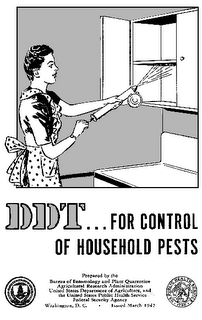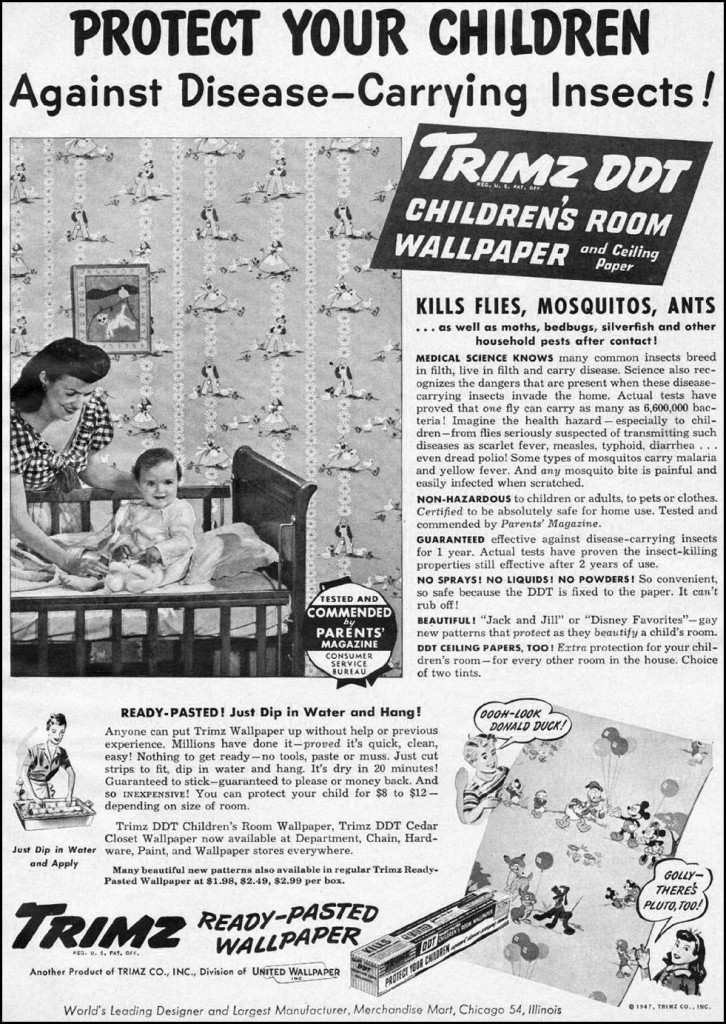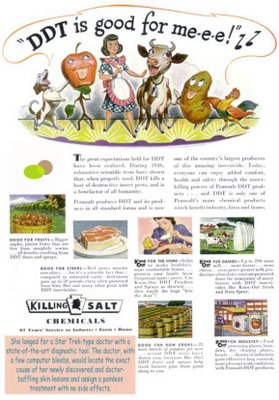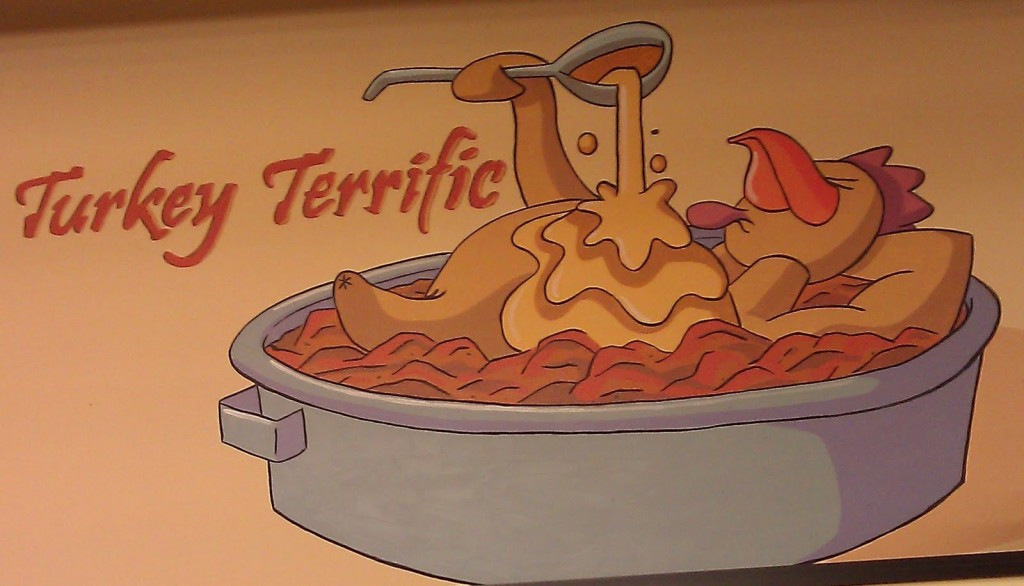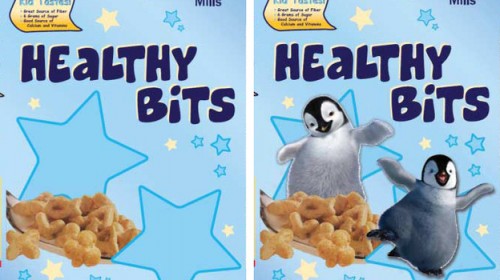In the 1940s and ’50s dichlorodiphenyltrichloroethane, a synthetic pesticide better known as DDT, was used to kill bugs that spread malaria and typhus in several parts of the world. DDT was argued to be toxic to humans and the environment in the famous environmental opus, Silent Spring. It was banned by the U.S. government in 1972.
Before all that, though, it was sprayed in American neighborhoods to suppress insect populations. The new movie Tree of Life has a great scene re-enacting the way that children would frolick in the spray as the DDT trucks went by. Here are two screen shots from the trailer:
Searching around, I also found some vintage footage (the person who uploaded the clip doesn’t specify the documentary):
The scene reminded me of an old post we’d written, below, featuring advertisements for the pesticide, one with the ironic slogan “DDT is good for Me-e-e!”
—————————
DDT was a pesticide marketed to housewives (and many others). We later discovered it to be an environmental toxin. Below are three of the advertisements (via Mindfully and KnowDrama and noticed thanks to John L.):
DDT-laced wallpaper, from Copyranter:
(text for this final ad after the jump)



